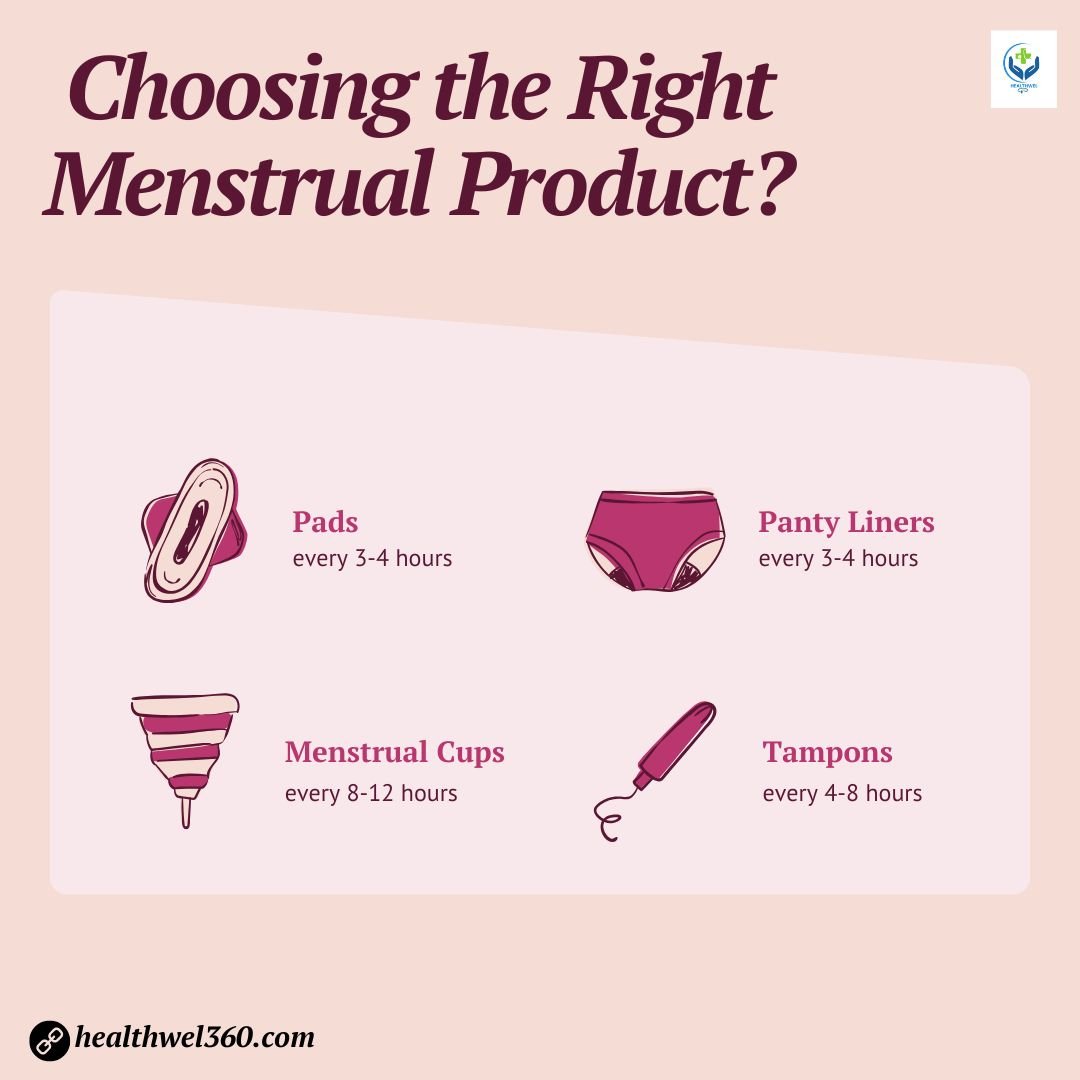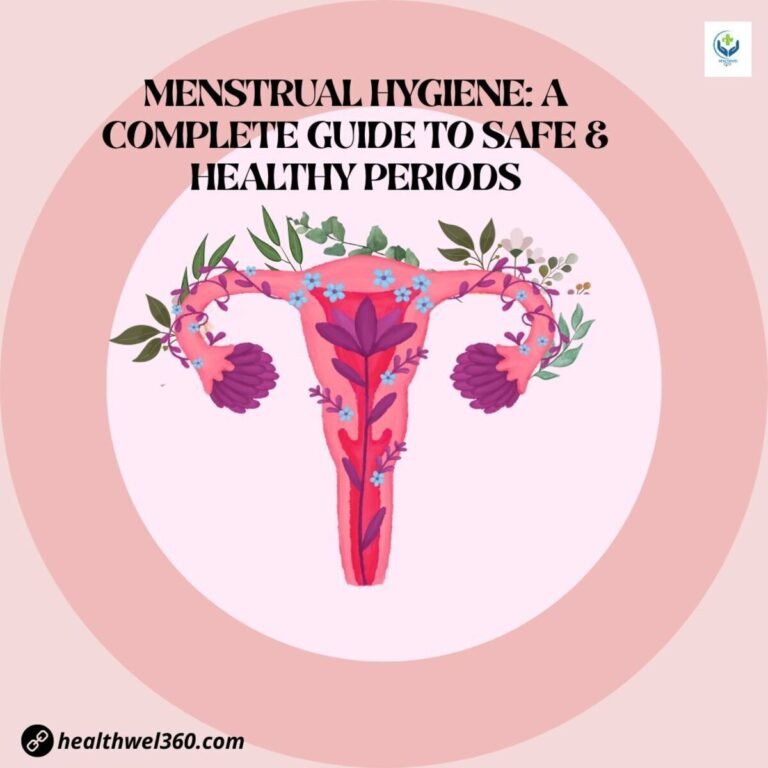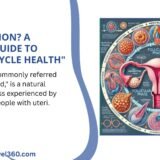Introduction
Menstrual Hygiene: A Complete Guide to Safe & Healthy Periods Menstrual hygiene is a critical aspect of women’s health and well-being, yet it remains a neglected topic in many parts of the world. Proper menstrual hygiene management (MHM) is essential to prevent infections, ensure comfort, and maintain dignity during menstruation. This article explores the significance of menstrual hygiene, common challenges, best practices, and the role of society in promoting better menstrual health.
What is menstrual hygiene?
Menstrual hygiene refers to the practices and measures taken by women and girls to maintain cleanliness and health during their menstrual cycle. It includes:
- Using clean and safe menstrual products.
- Having access to clean water and soap for washing.
- Proper disposal of used menstrual materials.
- Maintaining personal hygiene to prevent infections.
Poor menstrual hygiene can lead to reproductive tract infections (RTIs), urinary tract infections (UTIs), and other health complications. Additionally, stigma and lack of awareness often prevent women from managing their periods safely and confidently.
Challenges in Menstrual Hygiene Management
Despite progress in gender equality and health awareness, many challenges persist in menstrual hygiene management:
- Lack of Access to Menstrual Products
Millions of women and girls, especially in low-income countries, cannot afford or access sanitary pads, tampons, or menstrual cups. Instead, they resort to using old cloth, newspapers, or even leaves, increasing the risk of infections.
- Inadequate Sanitation Facilities
Many schools and public places lack clean toilets, running water, and disposal systems for menstrual waste. This forces girls to miss school or work during their periods, affecting their education and economic opportunities.
- Social Stigma and Taboos
Women are often considered “impure” during their periods and may face restrictions on religious activities, social interactions, or even entering kitchens.
- Lack of Education
Many girls receive no prior education about menstruation before their first period, leading to fear and confusion. Even in developed countries, misinformation about menstrual health persists.
- Environmental Concerns
Sustainable alternatives like menstrual cups and reusable pads are not widely adopted due to cost, availability, or lack of awareness.
Best Practices for Menstrual Hygiene
To ensure proper menstrual hygiene, the following practices should be adopted:

- Choosing the Right Menstrual Product
- Disposable Sanitary Pads: Widely used but generate waste.
- Tampons: Convenient but require proper insertion to avoid Toxic Shock Syndrome (TSS).
- Menstrual Cups: Reusable, eco-friendly, and cost-effective but require sterilization.
- Maintaining Personal Hygiene
- To stop bacteria from growing, replace menstruation products every four to six hours.
- Steer clear of perfumed products, as they may irritate skin.
- Proper Disposal of Menstrual Waste
- Used pads and tampons should be wrapped in paper and disposed of in designated bins.
- Burning or flushing menstrual waste can harm the environment and plumbing systems.
- Staying Hydrated and Eating Nutritious Food
- A balanced diet rich in iron and vitamins helps manage menstrual symptoms like fatigue and cramps.
- Breaking the Silence Around Menstruation
- Open discussions about periods in families, schools, and workplaces can reduce stigma and encourage better hygiene practices.
The Role of Governments and NGOs
Governments and organizations play a crucial role in improving menstrual hygiene through
- Menstrual Health Education: Incorporating menstrual hygiene into school curriculums to educate boys and girls.
- Awareness Campaigns: NGOs like UNICEF and WaterAid run programs to debunk myths and promote safe practices.
- Providing Free or Subsidized Sanitary Products: Countries like Scotland and India have implemented schemes for free period products in schools and public places.
- Improving Sanitation Infrastructure: Building gender-friendly toilets with water and disposal facilities in schools and workplaces.
Sustainable Menstrual Hygiene Solutions
With increased concerns about the environment, reusable sanitary items are becoming more popular:
- Menstrual Cups: Made of medical-grade silicone, they last up to 10 years.
- Reusable Cloth Pads: Eco-friendly and cost-effective.
- Biodegradable Pads: Made from organic materials that decompose faster.
Encouraging the use of these products can reduce plastic waste and promote long-term menstrual health.
Conclusion
Hygiene during periods is not only a women’s issue; it is an issue of public health. Ensuring access to sanitary products, clean water, and education is essential for gender equality and health equity. By breaking taboos, improving infrastructure, and adopting sustainable solutions, societies can create a world where menstruation is no longer a barrier to women’s empowerment.
Final Thoughts
The conversation around menstrual hygiene must continue to grow, involving policymakers, educators, and communities. Only through collective effort can we eliminate period poverty and ensure that no girl or woman has to compromise her health, education, or dignity because of her menstrual cycle.




